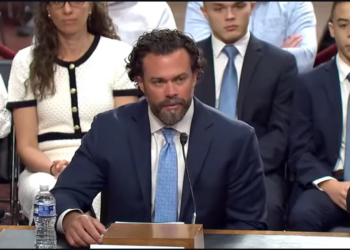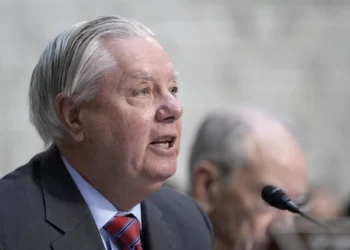Is climate change primarily caused by mankind? According to much of the scientific establishment, the answer to that question is an unequivocal, yes. Indeed, this view that mankind is responsible for climate change, or as it was previously called, global warming, has become climate dogma.
But as much as politicians, activists, and others claim it is “settled science,” the fact is that it is anything but settled. There remain critical questions and unknowns regarding climate science, as evidenced by repeated instances of climate change projections being proven erroneous.
Climate change has been a constant reality on planet Earth since its beginning, and its causes are not fully known or understood, despite the hubris surrounding the issue. The Earth’s climate is a complex system that scientists are still trying to understand.
Therefore, when a substance such as carbon dioxide — a naturally occurring gas that is an essential component for life on this planet — is labeled a “pollutant,” it’s understandable that some would object.
Of course, the reason carbon dioxide has been classified as such is that the levels of carbon dioxide in the atmosphere have increased as a result of mankind’s burning of fossil fuels. Scientists link higher saturation levels of carbon dioxide in the atmosphere with greater heat-trapping effects, concluding that mankind is responsible for global warming, which they warn will have massive negative impacts on the planet should it continue unchecked. That, in a nutshell, is the “science” of anthropogenic climate change.
It is based upon this understanding, this doctrinaire belief, that lawmakers have established laws and regulations to limit fossil fuel-based carbon dioxide emissions. This has been expanded to other human activity that contributes to “greenhouse gases” (GHGs), which include methane gas (also a naturally occurring substance) and other gases.
In the 2007 case Massachusetts v. EPA, the Supreme Court considered the issue of whether the Environmental Protection Agency could regulate GHGs under the Clean Air Act. The Court ruled 5-4 that “greenhouse gases fit well within the Act’s capacious definition of ‘air pollutant,’” meaning the “EPA has statutory authority to regulate emission of such gases.” Tellingly, the Court noted that “policy judgments have nothing to do with whether greenhouse gas emissions contribute to climate change and do not amount to a reasoned justification for declining to form a scientific judgment.” Instead, the Court said that the EPA had the authority to determine whether GHGs “cause or contribute to air pollution which may be reasonably be anticipated to endanger public health or welfare, or whether the science is too uncertain to make a reasoned decision.” This has been referred to as the EPA’s endangerment finding.
The focus in the case was the EPA’s authority to regulate vehicle emissions, but the ruling has been applied much more broadly to effectively encompass any industry that produces GHG emissions.
Of course, the auto industry has been most directly impacted by the Court’s ruling, as the EPA introduced a slew of regulations that have significantly increased the cost of cars. Furthermore, the Biden administration sought to use the EPA’s GHG regulatory power to effectively force automakers into adopting and scaling up production of electric vehicles with the eventual goal of eliminating gas-powered cars entirely. Included in Joe Biden’s erroneously named Inflation Reduction Act, which passed in 2022, was a clause that specifically classified carbon dioxide and other GHGs as “pollutants” regulated by the EPA.
Now, President Donald Trump is pursuing a pro-growth, pro-energy agenda, and his administration has been working to eliminate many of the hurdles to economic growth that the Democrat administrations of both Barack Obama and Biden put in place.
With Trump successfully securing favorable trade deals across the globe, one of the biggest industries that will benefit from these deals is the American auto industry. And the last thing the auto industry needs is GHG emission regulations that hamper growth.
Thus, in March, EPA Administrator Lee Zeldin rolled out a deregulation agenda wherein he promised to drive “a dagger straight into the heart of the climate change religion to drive down cost of living for American families, unleash American energy, bring auto jobs back to the U.S. and more.”
On that list of regulations targeted for elimination was the EPA’s GHG regulatory authority under the agency’s “endangerment finding.”
This week, the EPA rolled out its plan for eliminating the agency’s regulation of GHGs. As an EPA official explained, “If finalized, the proposal would repeal all resulting greenhouse gas emissions regulations for motor vehicles and engines, thereby reinstating consumer choice and giving Americans the ability to purchase a safe and affordable car for their family while decreasing the cost of living on all products that trucks deliver.”
The EPA also asserted that ending the GHG emissions regulations would result in $1 trillion in savings over the next 30 years, or $54 billion annually for the American consumer.
As Steve Milloy, a senior fellow at the Energy and Environment Legal Institute, observed, “One of the reasons cars cost so much is stupid fuel economy standards.”
However, the big question is, on what basis does the Zeldin-led EPA believe it can eliminate the agency’s regulation of GHGs in light of the Court’s Massachusetts v. EPA decision? According to Reason’s Jonathan Adler, this effort to eliminate the endangerment finding is a “fool’s errand” because courts will just strike it down.
That may be the case, yet the Zeldin-led EPA points to the Supreme Court’s 2022 ruling in West Virginia v. EPA, noting the agency lacked statutory authority to regulate GHG emissions and therefore argued that the agency’s endangerment finding is illegal.
In brief, the Trump administration is seeking to free the American people from the shackles of the cult of climate alarmism. Zeldin’s tactic is not to argue the science, which is unsettled, but to challenge the EPA’s authority to classify GHGs as “pollutants” and then, in turn, regulate them as such.
This issue will most likely end up before the Supreme Court before all is said and done, but it is a fight worth having. In the long run, it will likely take an act of Congress to end the EPA’s overreach.
















